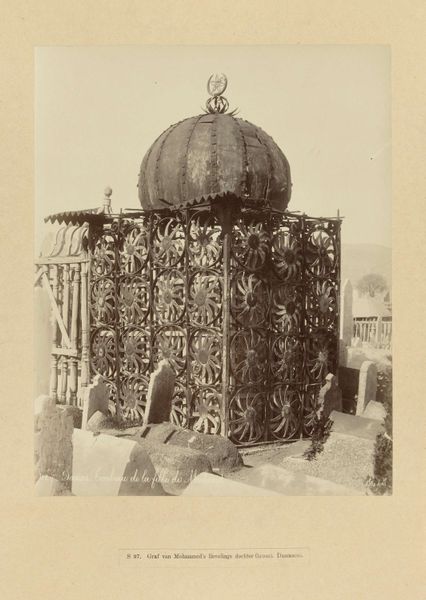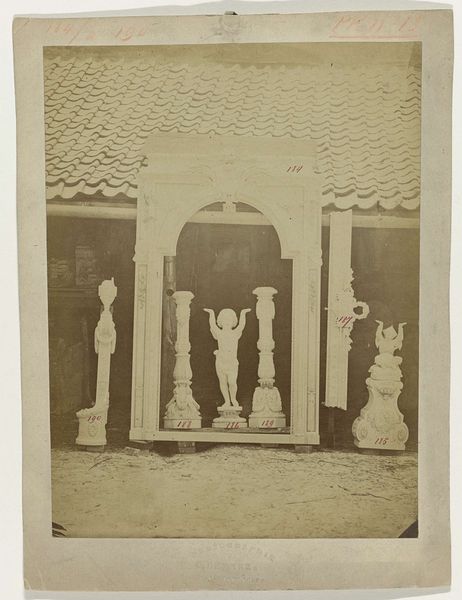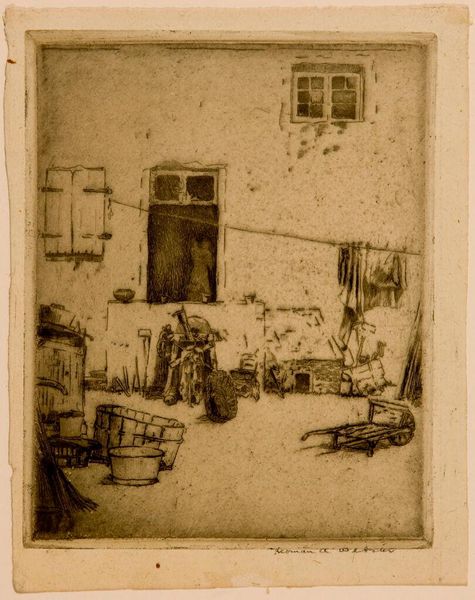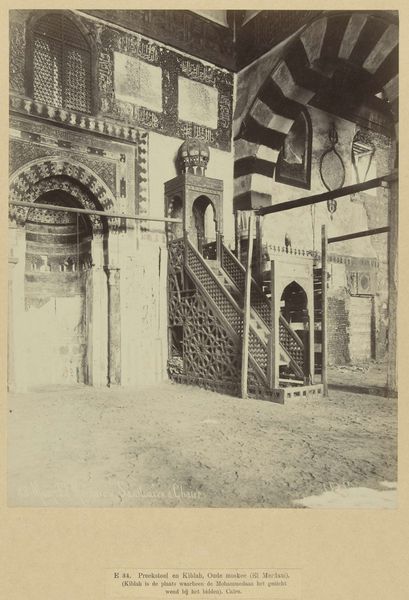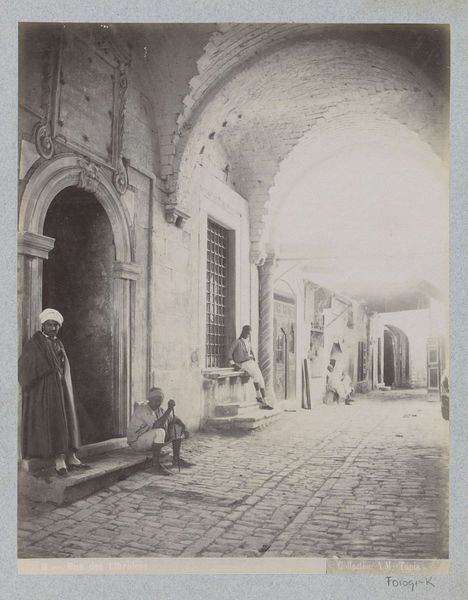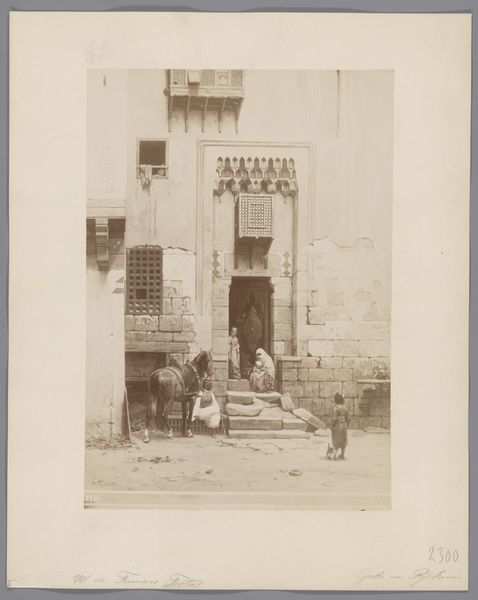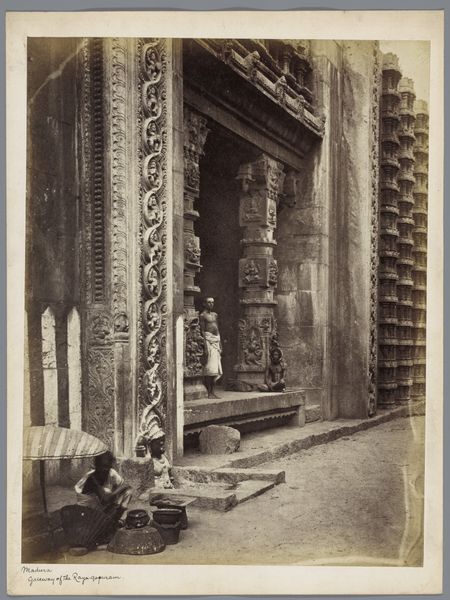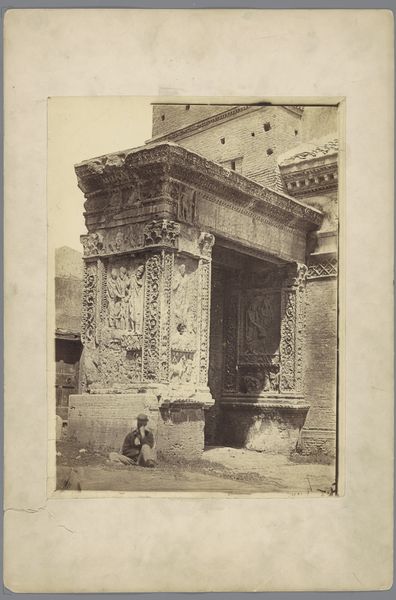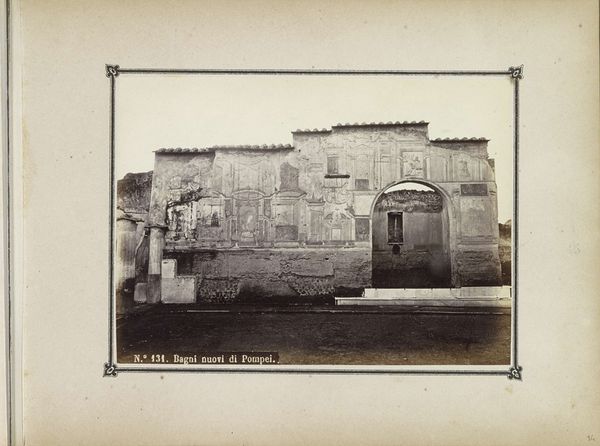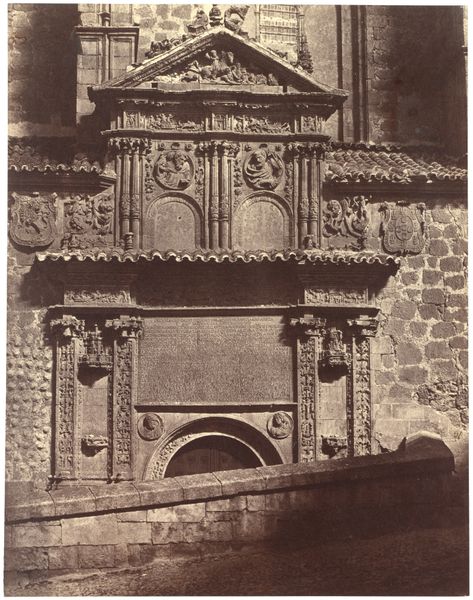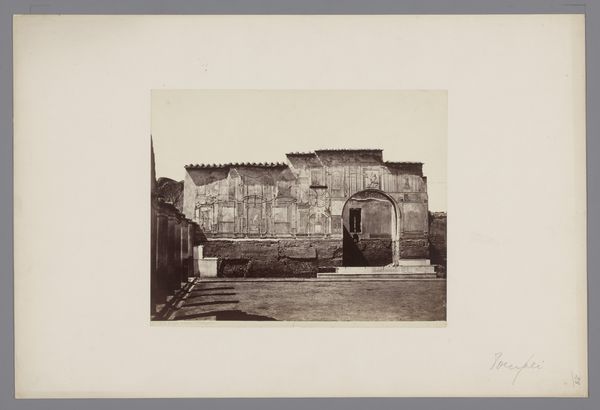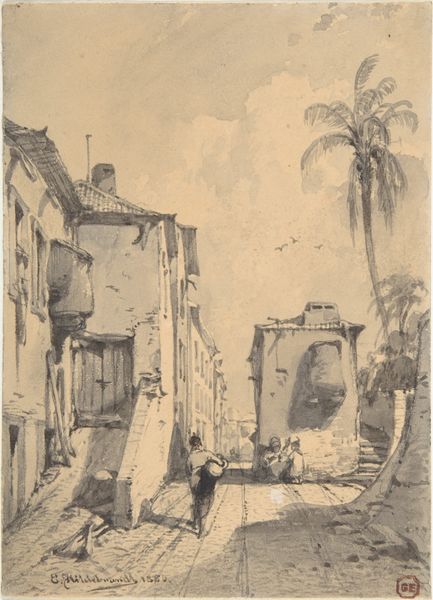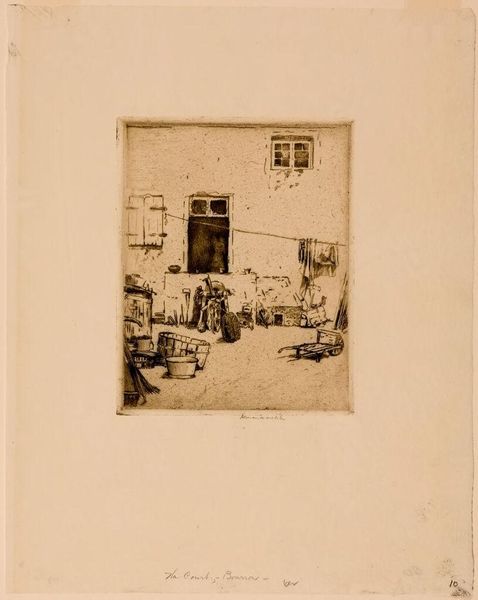
photography, albumen-print
#
portrait
#
landscape
#
photography
#
historical photography
#
orientalism
#
19th century
#
cityscape
#
islamic-art
#
albumen-print
Dimensions: height 279 mm, width 223 mm, height 558 mm, width 469 mm
Copyright: Rijks Museum: Open Domain
Editor: This is "Man drinking at a fountain, Damascus," a photograph, an albumen print to be precise, taken by Félix Bonfils sometime between 1867 and 1877. I’m struck by the contrast between the ornate fountain and the simple act of the man drinking. It feels…almost staged, but still evocative of daily life. What do you see in this piece? Curator: Immediately, I’m drawn to the cultural layering at play. The fountain itself is a powerful symbol of purification, not just physically, but also spiritually in many cultures, including Islam, which deeply informs the visual language here. Notice the geometric patterns, the arches – they echo traditional Islamic art, reminding us of sacred spaces and rituals. Editor: So, the act of drinking becomes almost…ceremonial? Curator: Precisely. And beyond the individual, consider the cultural memory encoded in this image. Water, particularly in a city like Damascus, is life. The fountain becomes a point of connection, a shared resource, a place where the individual is briefly united with the community, with history itself. Think about the psychological impact of finding respite at a public fountain, the momentary peace it provides. Editor: I never thought of it that way! It seemed like a straightforward snapshot, but it's really rich with symbolism. Curator: Consider the photographic medium itself. Bonfils, a Western photographer, documenting the "Orient" – it carries its own set of historical baggage, questions of representation and exoticism. What visual cues reinforce that perceived otherness, and how might we challenge those assumptions today? Editor: That gives me a lot to think about in terms of how we interpret these historical images now. Thank you! Curator: It is an image of visual memory, and seeing the ways cultural identity informs this encounter truly enrich our understanding.
Comments
No comments
Be the first to comment and join the conversation on the ultimate creative platform.
